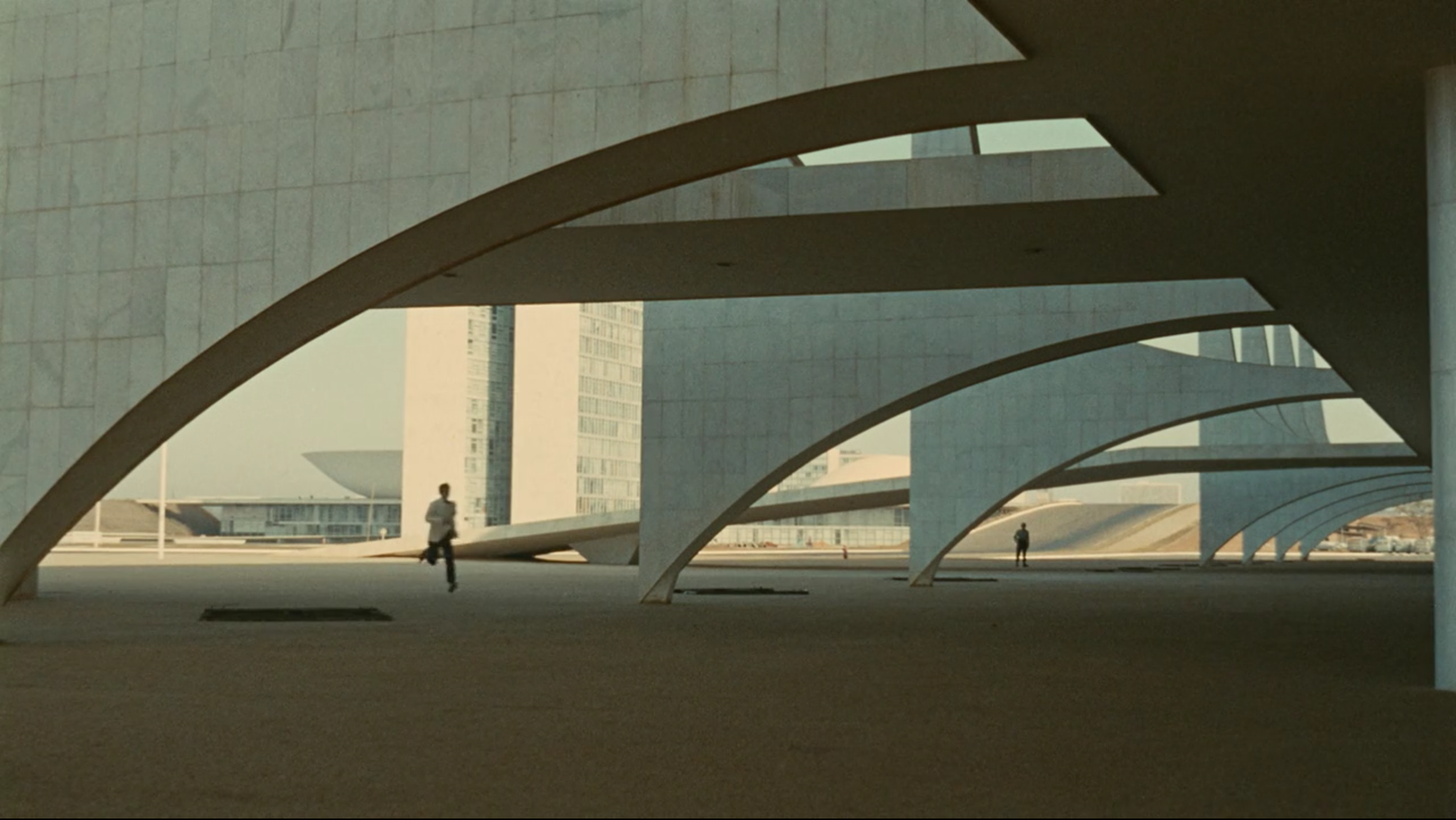 Image 1 of
Image 1 of


L'homme de Rio (1964)
(That Man from Rio)
![]()
Country: FR/IT
Technical: col 112m
Director: Philippe de Broca
Cast: Jean-Paul Belmondo, Françoise Dorléac, Jean Servais, Adolfo Celi
Synopsis:
A private on furlough follows his fiancée to Rio when she is kidnapped by agents who have stolen a priceless Incan statuette from her late father's museum of anthropology in Paris.
Review:
Breathless comedy-adventure in the manner of Hergé's comic books, which were in turn influenced by silent comedy. Belmondo leaps about from one mode of transport to another without a cent in his pocket, scaling buildings like some parkour practitioner avant la lettre, swimming faster than a speedboat and pausing for nary a swig of water or a mouthful of food for the entire ten-day period covered by the story. Meanwhile the film's travelogue through the sights of Brazil encompasses the Copacabana beach, sugarloaf mountain, some artfully silhouetted favela lodgings, the ultra-modern high rise of Brasilia, still under construction, and the Amazon basin. The same condescension is extended to the locals as you might find in a Tintin story, and the climactic dynamiting of several millennial trees, followed by a shot of Indians decoratively watching the passing demolition vehicles, just about sums up the film's level of sophistication. In sum, an unpretentious piece of Gallic Bondage with youthful, attractive stars and colourful locations. Michel Hazanavicius may have borrowed elements for his Rio-set second OSS 117 film, Lost in Rio (2009).
(That Man from Rio)
![]()
Country: FR/IT
Technical: col 112m
Director: Philippe de Broca
Cast: Jean-Paul Belmondo, Françoise Dorléac, Jean Servais, Adolfo Celi
Synopsis:
A private on furlough follows his fiancée to Rio when she is kidnapped by agents who have stolen a priceless Incan statuette from her late father's museum of anthropology in Paris.
Review:
Breathless comedy-adventure in the manner of Hergé's comic books, which were in turn influenced by silent comedy. Belmondo leaps about from one mode of transport to another without a cent in his pocket, scaling buildings like some parkour practitioner avant la lettre, swimming faster than a speedboat and pausing for nary a swig of water or a mouthful of food for the entire ten-day period covered by the story. Meanwhile the film's travelogue through the sights of Brazil encompasses the Copacabana beach, sugarloaf mountain, some artfully silhouetted favela lodgings, the ultra-modern high rise of Brasilia, still under construction, and the Amazon basin. The same condescension is extended to the locals as you might find in a Tintin story, and the climactic dynamiting of several millennial trees, followed by a shot of Indians decoratively watching the passing demolition vehicles, just about sums up the film's level of sophistication. In sum, an unpretentious piece of Gallic Bondage with youthful, attractive stars and colourful locations. Michel Hazanavicius may have borrowed elements for his Rio-set second OSS 117 film, Lost in Rio (2009).
(That Man from Rio)
![]()
Country: FR/IT
Technical: col 112m
Director: Philippe de Broca
Cast: Jean-Paul Belmondo, Françoise Dorléac, Jean Servais, Adolfo Celi
Synopsis:
A private on furlough follows his fiancée to Rio when she is kidnapped by agents who have stolen a priceless Incan statuette from her late father's museum of anthropology in Paris.
Review:
Breathless comedy-adventure in the manner of Hergé's comic books, which were in turn influenced by silent comedy. Belmondo leaps about from one mode of transport to another without a cent in his pocket, scaling buildings like some parkour practitioner avant la lettre, swimming faster than a speedboat and pausing for nary a swig of water or a mouthful of food for the entire ten-day period covered by the story. Meanwhile the film's travelogue through the sights of Brazil encompasses the Copacabana beach, sugarloaf mountain, some artfully silhouetted favela lodgings, the ultra-modern high rise of Brasilia, still under construction, and the Amazon basin. The same condescension is extended to the locals as you might find in a Tintin story, and the climactic dynamiting of several millennial trees, followed by a shot of Indians decoratively watching the passing demolition vehicles, just about sums up the film's level of sophistication. In sum, an unpretentious piece of Gallic Bondage with youthful, attractive stars and colourful locations. Michel Hazanavicius may have borrowed elements for his Rio-set second OSS 117 film, Lost in Rio (2009).